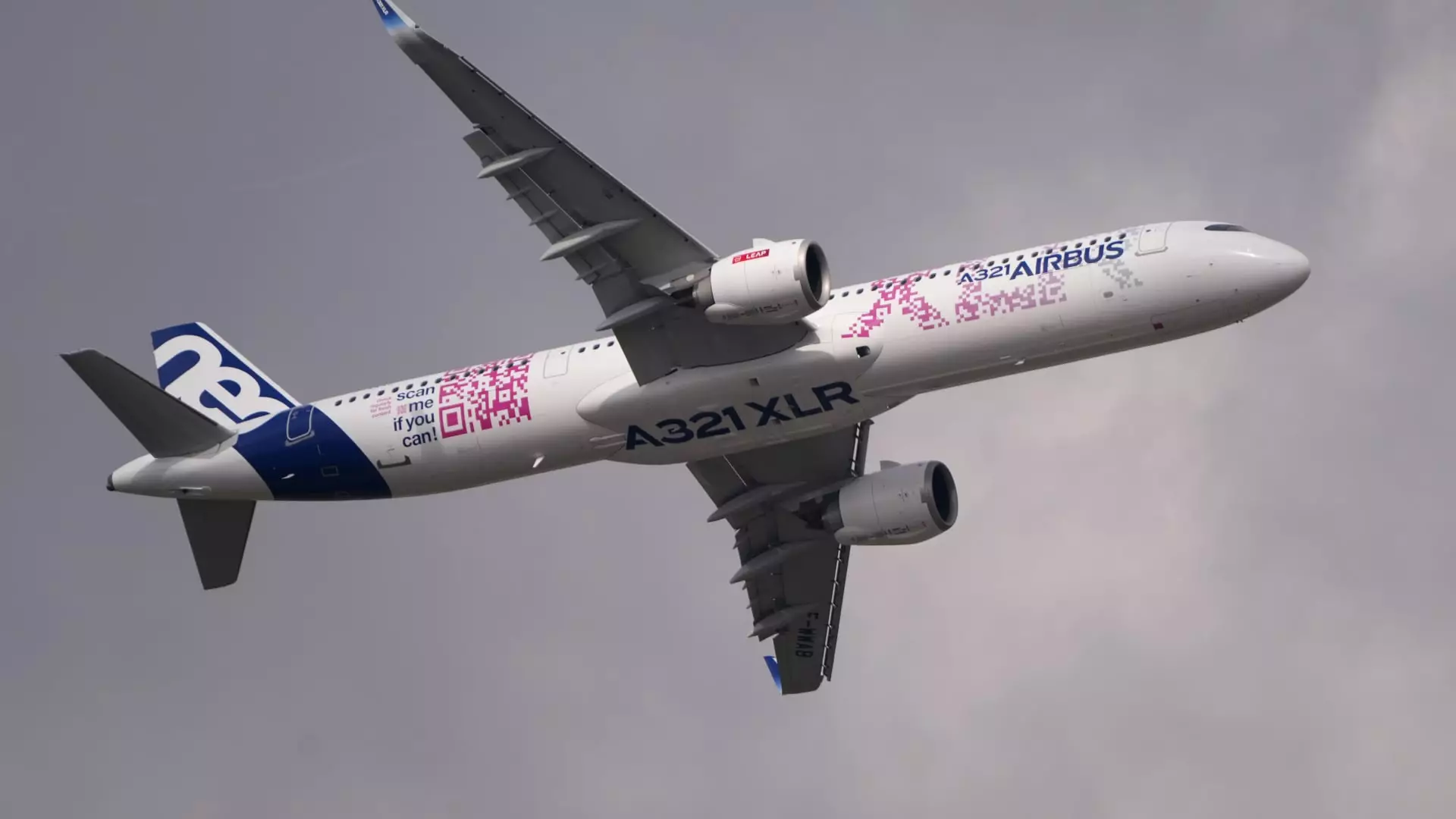The aviation industry is witnessing a significant transformation, especially in the realm of narrow-body aircraft. Airbus recently took a monumental step by delivering its first A321XLR, an extra-long-range variant of the widely recognized A321 model. This advancement not only underscores the airline manufacturer’s commitment to innovation but also highlights a growing trend towards smaller, fuel-efficient jets that can undertake longer journeys. With this delivery, Airbus further solidifies its position over rival Boeing, which has faced severe challenges in recent years, particularly following the fallout from the 737 Max tragedies.
Addressing Consumer Demand for Efficiency
Airlines are increasingly seeking more efficient aircraft to meet the demands of travelers who prioritize longer non-stop options while maintaining cost-effectiveness. The A321XLR stands out by offering a remarkable non-stop range of up to 4,700 nautical miles, equivalent to approximately 11 hours of flight time. This feature positions the aircraft strategically for transcontinental routes, making it a prime choice for airlines like Iberia, which plans to introduce this model on its Madrid-Boston route next month. Furthermore, with major American carriers—American Airlines and United Airlines—also placing substantial orders for the A321XLR, it’s evident that demand for this category of aircraft is noteworthy.
As the globe becomes more conscious of its carbon footprint, aircraft that consume less fuel have become increasingly desirable. Airbus claims that the A321XLR is approximately 30% more fuel-efficient than its older counterparts. This reduction in fuel consumption translates into lower operational costs and diminished environmental impact, aligning with the global aviation industry’s move towards sustainability. The A321XLR’s efficiency could play a substantial role in helping airlines achieve their emissions targets while catering to a growing market for greener travel options.
While Airbus is swiftly moving forward with the A321XLR and boasts an order backlog exceeding 500 units, Boeing’s situation is far less rosy. The company has been in the shadows following the dual disasters of the 737 Max, which led to severe scrutiny and halted production plans for new aircraft. Instead of innovating, Boeing is now focusing on restructuring, downsizing its workforce, and responding to calls for improved safety and quality. This decision comes at a critical time when Airbus is aggressively pursuing market share, raising questions about Boeing’s future competitiveness in the narrow-body segment.
Airbus’s delivery of the A321XLR undoubtedly marks a pivotal moment in the aerospace sector. It not only emphasizes the shift towards efficient aircraft capable of longer distances, but also highlights a clear division in the strategies of the leading manufacturers in aviation. While Airbus takes bold strides forward, Boeing finds itself grappling with past mistakes and reassessing its trajectory. As consumers begin to experience the benefits of the A321XLR, the industry could witness a broader shift towards innovative and sustainable flying options in the years to come.


Napsat komentář